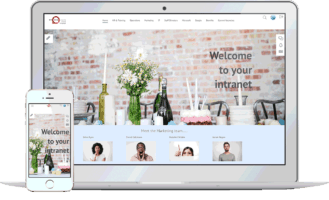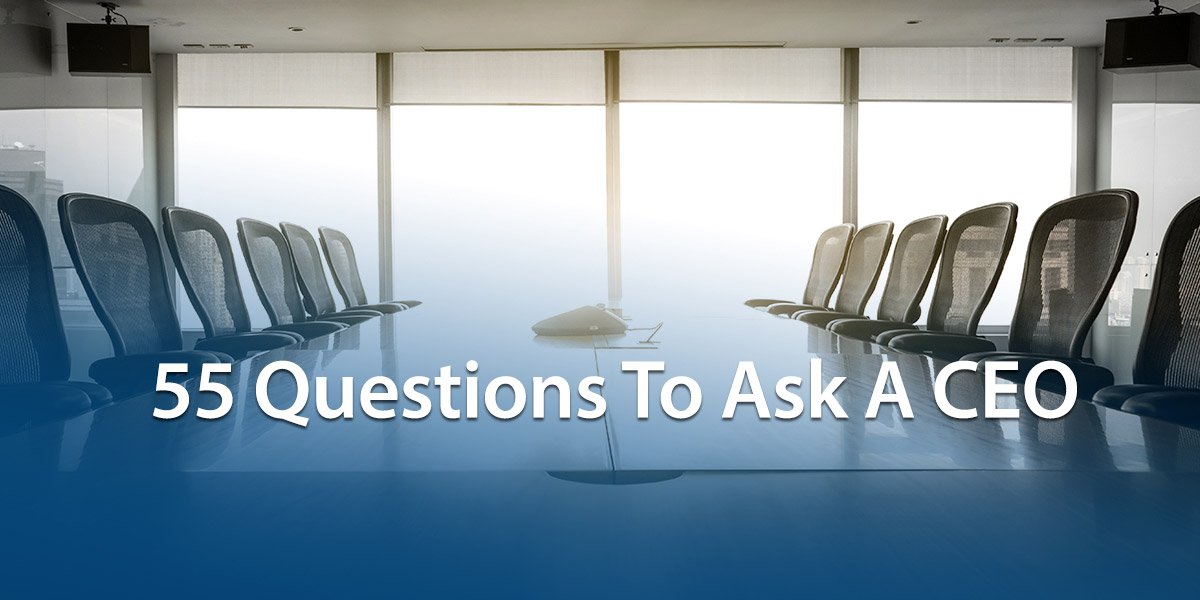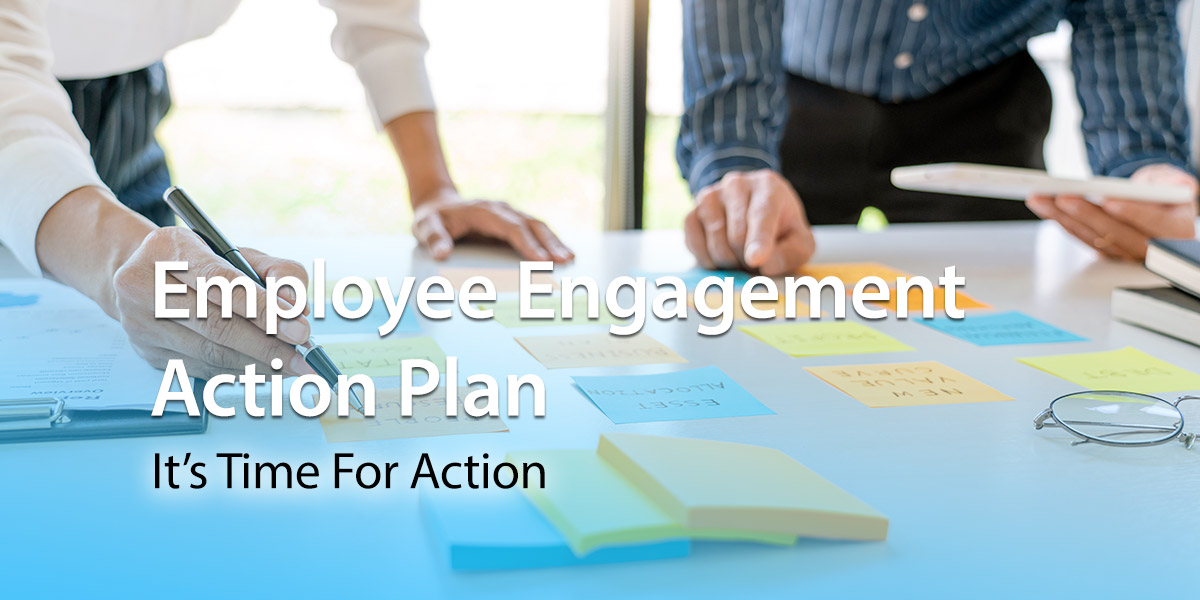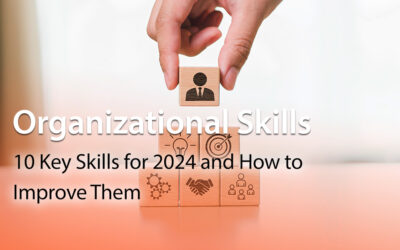Once upon a time, a good salary plus a few perks like company vehicles or gym membership was all it took. Nowadays, attracting and retaining the best people in the hybrid workforce is not so straightforward. If you want to avoid the domino effect of the Great Resignation, you also need to deliver a great employee experience.
In this post, we share the lowdown on employee experience management. We look at why it’s more important than ever. And we share some best practice tips that every HR manager should know.
What Is Meant By Employee Experience?
The employee experience (EX) covers every touchpoint a worker has with an employer. It starts the moment an individual first contacts you about a job. And it continues throughout the five stages of the employee life cycle, only ending once the worker leaves or retires.
The employee experience describes how your people feel, think and learn during each stage. Deloitte nicely sums up the importance of EX as follows:
At its core, EX is about making work better for humans and making humans better at work.
The customer experience is firmly on the radar of every CEO. Organizations have woken up to the fact relationships with customers are primarily driven by emotions. It’s all about how they ‘feel’ about your brand. And the same approach is now being adopted for employees. For workers, it’s not just about salaries, perks, and incentives. To get the best out of your people, you need to listen, value, and connect with them.
Ultimately, employees’ day-to-day experiences impact how hard they work and how invested they are in company success. And that’s what makes EX so important.
What Are The Elements Of Employee Experience?
In The Employee Experience Advantage, best-selling author and EX guru Jacob Morgan identified three critical components impacting EX. Crucially, all three have been turned upside down by the pandemic, necessitating a fresh approach.
Technological Environment
Having the right digital tools increases workers’ confidence and ability to do the job. And it also ensures they remain productive in their roles. Technology is even more critical within hybrid workplaces. Whether working in the office or remotely, all staff should have a level playing field. When it comes to communication, information sharing, and collaboration, technology can enhance EX for all your people.
Physical Environment
It’s no surprise that the workplace environment dramatically impacts employees’ wellbeing. What the workplace looks like and offers will affect how staff feel about coming to work. Modern, bright, airy workplaces tend to have happier, more productive, and focused workers. And it goes without saying that a decent coffee machine is a must-have.
However, nowadays, more staff are likely to work from home at least some of the time. Therefore, the physical environment of the employee’s home office is just as important. No matter where your people are, ensuring they have all they need to be happy and productive is vital to EX.
Culture
Company culture is the vibe you get when you walk into a workplace. It can either energize or depress, motivate or dishearten. It can even empower or disenfranchise. Culture is hard to define, but it’s made up of your values, leadership styles, structure, and processes. Even the banter on the shopfloor contributes to the company culture. To maximize the EX, ask yourself the following searching questions:
- Do our people feel heard by management?
- Do their supervisors support them?
- Do we recognize and reward the team at every opportunity?
- Are there pathways for employees to grow and develop at work?
What Is Employee Experience Management?
It describes your collective efforts to track and improve EX. The aim is to promote positive and minimize negative experiences at every stage of the employee life cycle.
There are five key stages to the employee life cycle. And it makes sense to organize your employee experience management along the same lines:
- Recruitment
- Onboarding
- Development
- Retention
- Offboarding and exit
Typically, employee experience management involves the following activities, plus much more:
- Gathering feedback from workers using pulse checks, engagement surveys, and exit interviews
- Two-way communication between employees and management
- Employee-centered performance reviews
- Monitoring how supervisors interact with and support their team
- Ensuring technological platforms are matched with workers’ needs
- Setting up learning and development programs
Gathering staff feedback and reviewing your business processes harvests a wealth of valuable data and insights. You will identify gaps in your EX and areas for improvement, whether minor changes or company-wide initiatives.
What Does An Employee Experience Manager Do?
EX is such a powerful driver of business performance that many organizations have appointed a specialist employee experience manager.
The job holder takes overall responsibility for EX. And while the tasks vary from company to company, here are some common elements:
- Responsibility for staff compensation, perks, and benefits
- Developing rewards programs and employee recognition schemes
- Onboarding new employees
- Overseeing employee professional development, including leadership training for managers
- Collaborating with executives to ensure company policies are effective and correctly applied
- Collecting and analyzing employee feedback and making recommendations to company leaders
The employer-employee relationship must be nurtured and cultivated, just like any relationship in life. And employee experience managers build and sustain positive EX at every point in the employee’s life cycle.
What Is An Employee Experience Solution?
Managing and sustaining EX doesn’t just happen. You need to plan and prepare an effective solution. An EX manager is a great place to start. However, there are things HR can do now to get the ball rolling.
Listen To Your People
If you want to improve EX, there’s no better place to start than asking your people. Find out how they are doing and ask for ideas on ways to simplify and improve their work. And invite staff to share their insights on how to make the employee life cycle more personal and meaningful. A simple and effective way to get employee feedback is using software designed for employee surveys. According to survey software companies, it’ll enable you to create custom questions or use scientifically researched and verified question templates. You can also choose whether the survey should be anonymous, depending on what works best for your situation. Gathering feedback is so essential to EX management that we take a deep dive into employee surveys later.
Plan
Use the data gleaned from your employee surveys and start small. Begin with quick fixes and gradually build up to high-level strategic initiatives. For example, implementing an onboarding checklist could dramatically impact that stage, ensuring staff receive a consistent and comprehensive induction. Always have the overall EX as your guiding star as you look to improve aspects of the employee life cycle.
Be Ready To Invest
It could be fresh office furniture or investing in a new collaboration platform. Either way, be prepared to splash some cash, so employees want to come to work. However, you don’t have to blow your budget on a complete workplace refit. Swapping hard plastic chairs in the meeting room for more comfortable ones can make all the difference. And don’t forget about your remote workers. Many companies now offer a home office setup allowance.
Measure Progress
Whether it’s pulse checks, engagement surveys, or ongoing performance conversations, gather real-time data. This helps you benchmark where you are currently and the impact of your changes over time.
Report Back
Be sure to celebrate your successes. Keep workers in the loop and report back on your achievements. All that good news is bound to get even the most determined naysayers on your side.
Types Of EX Surveys
As we have seen, finding out how your people feel is critical to employee experience management. And it also makes it easier to track your progress. Here are some ways you can capture those feelings at different stages of the employee life cycle.
Candidate Surveys
Find out about people’s experiences of your ad-to-hire process with a candidate survey. Make sure you capture the views of both successful and unsuccessful applicants. You will gain insights into whether your job ads attract and engage the best candidates. And discover how effective your branding, interviews, and recruitment processes really are. Ensuring unsuccessful applicants also have a voice will do your brand reputation no end of good.
Onboarding Surveys
Your people’s onboarding experience sets a crucial marker for the entire employee journey. Check-in regularly with new recruits to ensure onboarding is positive and effective. Quick pulse surveys or snap polls are the best options to avoid survey fatigue.
Training Feedback Questionnaires
Professional development is crucial to retention. Harvesting data after training events means you can map the staff member’s growth and ensures you optimize learning opportunities.
Employee Engagement Surveys
These comprehensive employee surveys often take place annually. They give workers a voice, direct company objectives, and tell you how you are doing on employee engagement.
Exit Interviews
Workers typically give honest feedback when they are about to leave. So, use exit interviews to gain insights into the offboarding life cycle stage. Understand the positives and negatives of EX and your company culture and identify ways to improve turnover and retention.
Pulse Checks
These shorter, more regular surveys are helpful for any stage of the employee life cycle. Nimble and easy to put in place, they provide valuable qualitative data you can track over time.
Ad Hoc Surveys
Get quick feedback on a hot topic with an ad hoc survey. Perhaps you are introducing a wellness program to assist with retention. Or maybe you want to find out if managers’ leadership training has impacted teams. Ad hoc surveys are quick to deploy and give you instant feedback.
Always-on Feedback
These on-demand surveys allow workers to offer in-the-moment insights and feedback. Typically very short with just a handful of questions, always-on surveys provide real-time snapshots of staff morale.
Employee Experience Management: Quick Summary
Hybrid working requires a fresh approach to the employee experience. Your remote workers’ EX may differ entirely from those in the office.
There are three main elements to the EX:
- Technological environment
- Physical environment
- Culture
Employee experience management is a comprehensive approach to EX that encompasses the five key stages in the employee life cycle. Gathering feedback and data at each stage helps you identify what matters to your people.
And it helps guide and shape EX initiatives to ensure your physical workplace, technology, and culture are the best they can be for all workers.
According to McKinsey, up to 40 percent of workers plan to quit their jobs in the next 3-6 months. There’s no doubt the Great Resignation is making it harder to retain top talent. Investing in EX management offers an effective way for HR to navigate these stormy seas.
What Is B2E?
Business-to-employee is the activities, digital workplace systems, and processes employers have in place to attract, retain, and engage their staff.
B2E covers initiatives such as recruitment and retention policies, on-boarding, and professional development opportunities, as well as employee wellness initiatives. Internal communications and employee engagement are essential elements within this. However, it’s also about having digital platforms in place so workers can get the job done more efficiently and effectively.
A broad term, B2E encompasses any operational activity where the employee is the central focus.
Why Is Business To Employee Marketing Important?
Richard Branson famously once said that customers come second and employees first. And there’s a wealth of evidence confirming the vital link between engaged employees and happy customers. A compelling B2E strategy, therefore, will have a knock-on effect in terms of B2C or B2B marketing. Workers who feel invested in the company and identify strongly with its vision and values deliver superior customer service. And so, a B2E strategy will support high levels of customer or client satisfaction. It will enhance your brand reputation. And it will positively impact on profits as well as your competitive advantage.
Furthermore, attracting and retaining the best talent is more challenging in today’s competitive and increasingly globalized marketplace. Nowadays, employees are changing jobs more frequently than ever before. Data from the Bureau of Labor Statistics tells us that the median number of years employees have worked for their current employer is now just 4.6 years. Moreover, the average tenure of workers aged 25 to 34 is only 2.8 years. And according to Glassdoor, the average US company takes about 52 days to fill a vacant job role and spends about $4,000 on hiring a new employee. In this context, it’s easy to see why recruitment and retention budgets are spiraling out of control for many companies.
The expectations of employees are also changing. Research from Gallup has confirmed that ‘employees want jobs that fit their lifestyle, give them opportunities to grow and connect them to greater meaning and purpose.’ Where once a competitive salary and a few company perks were enough to entice a recruit, today’s workers demand more.
Business To Employee Tools

And when it comes to the best B2E digital platform, an intranet is the obvious choice. It provides a personalized single gateway to all digital tools. And, at the same time, it delivers a host of other business benefits.
5 Ways An Intranet Can Support B2E And The Employee Experience
1. Onboarding New Employees
When it comes to retention, the journey starts with onboarding. A dedicated onboarding space within your intranet provides a one-stop-shop for all new employees. Most new staff are greeted on day one with a desk piled high of required reading. An intranet, however, makes the dissemination of information a much quicker and easier process.
Using a self-service approach and a personalized onboarding checklist, staff can access the tools and information they need. The intranet is super-easy to navigate and has an advanced search function. These features, coupled with an engaging interface, ensure employees have all the necessary resources at their fingertips.
The intranet offers the flexibility and versatility demanded by today’s workforce. Cloud technology means staff can access the intranet’s onboarding portal 24/7. Onboarding takes place at a pace that suits the worker and the demands of the job. It could be while on their daily train commute, or while working from home.
Online approval forms ensure that the new hire easily completes all the necessary paperwork. Whether it’s HR forms, bank details for payroll, or IT setup, the intranet’s automated process is speedier and more accurate.
Furthermore, the new staff member will be glad of the intranet’s online staff directory. No longer will they need to remember the names and faces of all those colleagues! Instead, a quick check of the intranet’s directory will do away with the embarrassing potential for getting it wrong.
An effective onboarding process has the potential to deliver on staff retention rates as well as the productivity of the new hire. As a result, it should be a central part of your B2E strategy.
2. Promoting The Company Culture
Promoting company culture is essential for onboarding. However, the workforce generally can benefit from timely reminders and reinforcement of the bigger picture. It supports a common sense of purpose. And it ensures staff understand how they connect with and contribute to the company’s mission.
The intranet is a fantastic vehicle for communicating these critical messages. And the flexible nature of the intranet platform means you can select from a variety of media. You can choose from videos, webcasts, podcasts, interactive webinars, wikis, infographics, surveys, checklists, or online manuals.

Similarly, a CEO blog provides a direct comms channel between staff and senior management. Use it to communicate company goals and corporate targets as well as success stories and achievements. Encourage staff to comment and provide feedback for greater openness and transparency.
Consider too an intranet employee recognition scheme will go a long way to celebrating and rewarding the success of your employees. A public shout out on the intranet’s news feed sends a strong B2E message out to all staff members.
3. Providing Opportunities For Employee Development
Providing opportunities for personal growth and development are a vital part of the employee experience and B2E.
Businesses with a track record of promoting continuing professional development have a more positive employee experience than their counterparts. And when it comes to retention, employees that can see a professional development path are more likely to stick around. In a survey published in Forbes, 86 percent of respondents confirmed they would change jobs if there were more opportunities for professional development.
Once again, the intranet has much to offer when it comes to continuous learning. Rather than traditional, and often expensive, classroom-style learning, you can use a range of options. These can fit around employee’s specific needs concerning learning preferences, family commitments, and job demands. Plus, they work equally well for remote workers. Possibilities include the following:
- Webinars
- Podcasts
- How-to videos
- Internal apprenticeships or mentoring
- Infographics
- Online checklists and surveys
Furthermore, the intranet offers the potential for more personalized, self-directed professional development with employee-driven programs. Some companies have embraced this approach wholeheartedly. They have given employees a budget and the freedom to select options and pathways within overall corporate objectives. This approach is empowering for individuals and also works for the business.
4. Offering Employee Wellness And Benefits
The best-performing B2E companies take a holistic approach that encompasses employee wellness initiatives and benefits packages. It makes sense that a healthy workforce is less likely to be off sick. And a healthy workforce tends to be more productive while at work.
It’s estimated that absenteeism alone costs employers $225.8 billion per annum. And so, the potential cost savings make wellness and employee benefits hard for companies to ignore.

Whatever wellness and benefits package you put together, the intranet is the ideal place to showcase what’s available. Include online roadmaps and toolkits for identifying and dealing with a range of workplace health issues. The intranet can educate and inform whether it’s mental health, ergonomics, occupational safety and health through to tips on chronic disease management.
Get staff involved with a blog or #wellness channel on the team instant messaging chat. Employees can use it to share healthy recipes and reviews of local yoga classes. Or they can invite colleagues to join a lunchtime running club.
5. Facilitating Knowledge Management
A central theme to B2E marketing is having the right tools to support staff in getting the job done. There’s nothing more frustrating for an employee than wasting time trying to locate the latest version of a document. And poorly-named files and folders are downright annoying distractions.
When it comes to sharing organizational data, it’s vital from a B2E perspective to have set up corporate knowledge management systems. Besides, it will support more efficient and effective working across the board.
The intranet can provide your business with that all-important single source of truth for corporate intelligence. Whether it’s databases, standard operating procedures, company manuals, presentations, or guides, the intranet brings it all together in one easy-to-navigate digital library.
For MyHub customer Kenect Recruitment, the intranet has become an indispensable tool for knowledge management. Staff source information for themselves, which has freed up management from responding to queries. One example is the Google Slides presentations of training courses and modules. Kenect posts these on the intranet so that staff can double-check the detail or follow up on a query. All the information is easily accessed with just a few clicks of the mouse.
Single Gateway For A Positive Employee Experience
These are just some of the ways an intranet can support a B2E strategy in your business. However, there is one crucial advantage that an intranet has over other B2E tools, and that’s single sign-on access. All these great tools, plus a whole lot more, are available within the intranet. Single sign-on means you can access other office systems with embedded G Suite or Office 365 apps, DropBox and Salesforce.
An intranet, therefore, is a truly integrated platform that will simplify the way employees work. Capable of home page personalization with the employee’s favorite #channels, news feeds and tools, an intranet offers a total solution. When it comes to business-to-employee marketing, the intranet is a must-have.
Find out more by getting in touch with the friendly team at MyHub. A free demo or 14-day trial means you can explore the possibilities without making any commitment. Kickstart your B2E strategy today.











